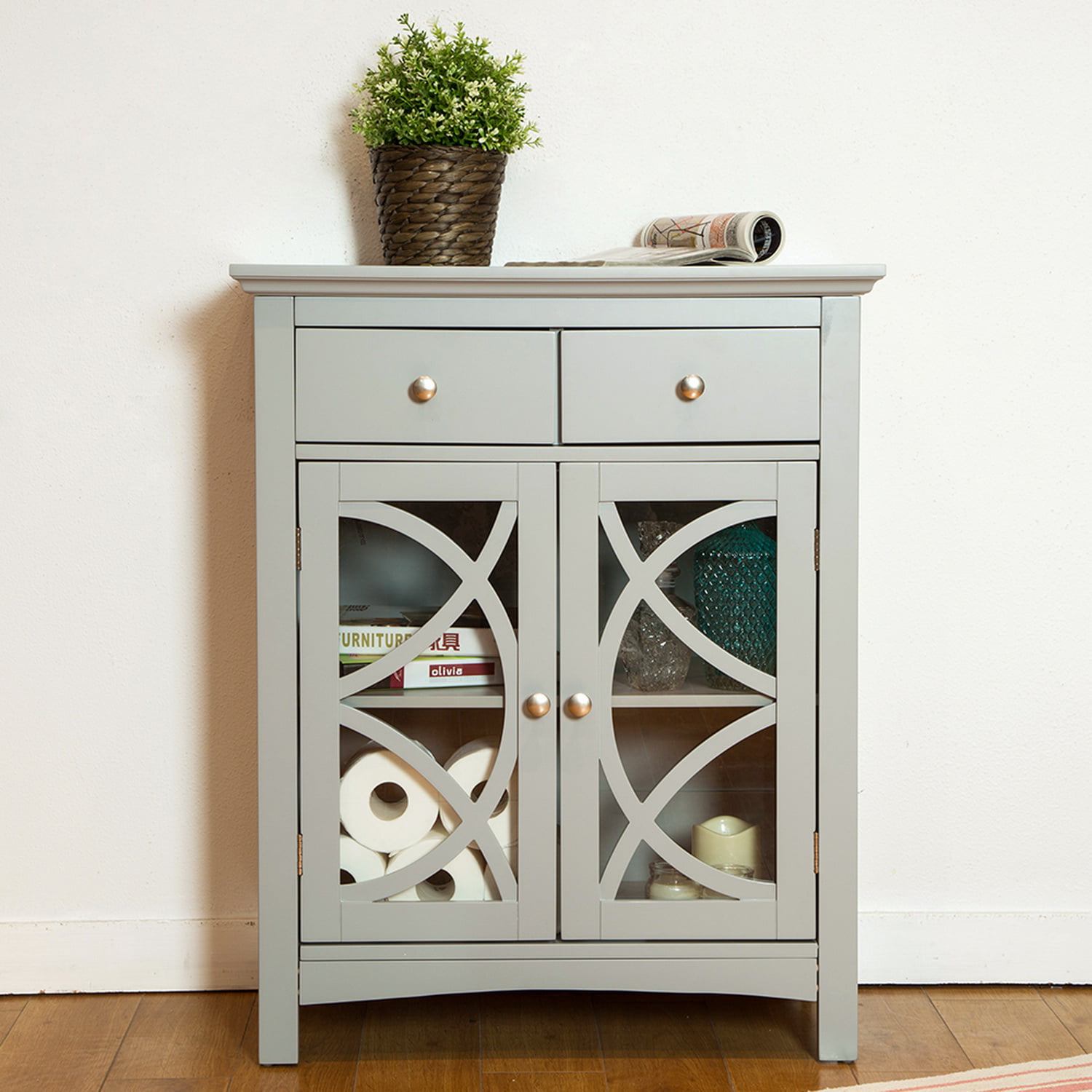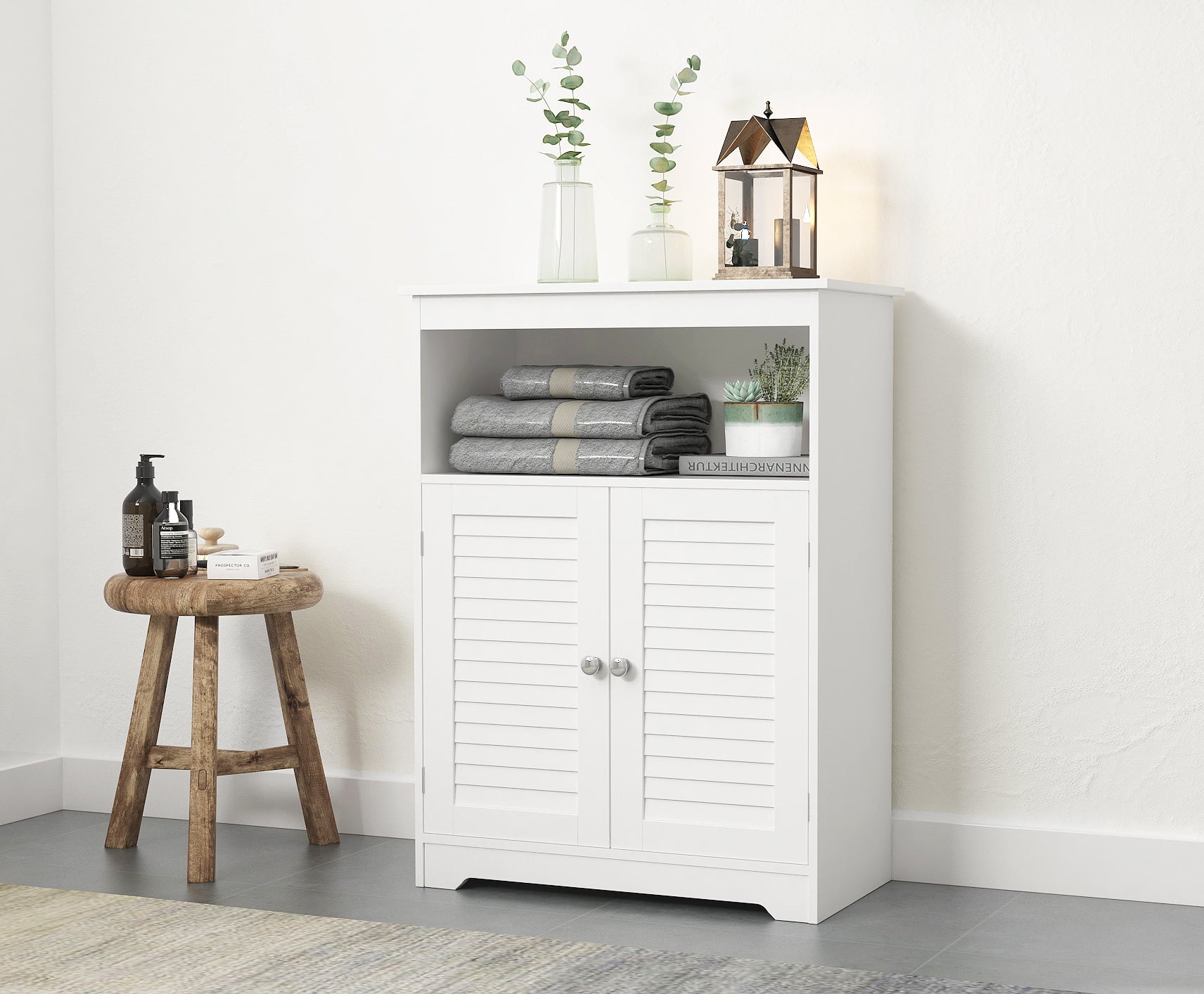Types and Styles of Floor Cabinets with Doors and Shelves

Floor cabinets, the unsung heroes of organized living spaces, come in a dazzling array of styles and designs. From sleek modern pieces to rustic farmhouse charm, the options are virtually limitless, allowing you to perfectly complement your existing décor and storage needs. The right cabinet can transform a cluttered room into a haven of efficiency and style.
Cabinet Styles and Materials
The style of your floor cabinet significantly impacts the overall aesthetic of your room. Material choices play a crucial role in determining both the look and the durability of the cabinet. Consider the following options:
| Style | Material | Design Aesthetics | Typical Features |
|---|---|---|---|
| Modern | Metal, lacquered wood, high-gloss finishes | Clean lines, minimalist design, sleek handles | Often features flat panel doors, simple shelving |
| Traditional | Solid wood (oak, cherry, mahogany), stained finishes | Ornate details, decorative molding, detailed carvings | May incorporate raised panel doors, multiple shelves, possibly glass-paneled doors |
| Rustic | Reclaimed wood, distressed finishes, metal accents | Rough-hewn textures, visible wood grain, antiqued look | Often features shaker-style doors, open shelving, visible hardware |
| Contemporary | Wood veneer, laminate, composite materials | Simple, functional design, neutral colors, integrated handles | May incorporate a mix of materials, sleek profiles, adjustable shelving |
Door Styles and Their Visual Impact
The choice of door style dramatically alters the cabinet’s appearance. Different styles create distinct visual impressions:
Shaker-style doors, characterized by a simple frame surrounding a flat center panel, offer a clean, timeless look that suits both traditional and modern settings. Flat panel doors, with their smooth, unadorned surfaces, contribute to a minimalist aesthetic. Raised panel doors, featuring a recessed center panel, add a touch of elegance and sophistication, often found in more traditional designs. The choice depends entirely on personal preference and the overall design scheme.
Shelf Configurations and Practical Implications
The configuration of shelves within a floor cabinet is crucial for optimizing storage. Adjustable shelves provide unparalleled flexibility, allowing you to customize the space to accommodate items of varying heights and sizes. Fixed shelves offer a more permanent solution, ideal for situations where consistent organization is paramount. Pull-out shelves, particularly useful in deeper cabinets, maximize accessibility and prevent items from getting lost in the back. The selection depends on the intended use and the types of items being stored.
Functionality and Uses of Floor Cabinets with Doors and Shelves

Floor cabinets, with their versatile design incorporating doors and shelves, offer a practical and stylish storage solution for a multitude of spaces within the home and beyond. Their functionality extends far beyond simple storage, impacting the overall organization and aesthetic appeal of any room. The adaptability of these cabinets makes them a popular choice for homeowners seeking efficient and attractive storage solutions.
Floor cabinets’ adaptability stems from their customizable nature. The combination of doors and shelves allows for both concealed and open storage, catering to the specific needs of different environments and personal preferences. This adaptability allows for a seamless integration into diverse interior design styles.
Applications of Floor Cabinets in Various Settings
The utility of floor cabinets transcends specific room types. Their application in kitchens, bathrooms, living rooms, and garages highlights their versatility. In kitchens, floor cabinets often house bulky appliances, cookware, and pantry staples. The doors keep items concealed, maintaining a clean and organized appearance. Shelves within the cabinets provide further organization, allowing for easy access to frequently used items. Bathrooms benefit from floor cabinets for storing toiletries, cleaning supplies, and linens. The enclosed nature of the cabinets protects these items from moisture and dust. In living rooms, floor cabinets can serve as media centers, storing electronics and entertainment accessories. In garages, they provide a space for tools, gardening equipment, and seasonal items. The sturdy construction of floor cabinets makes them ideal for heavier items often found in garages.
Comparison of Floor Cabinets with Other Storage Solutions, Floor cabinet with doors and shelves
Choosing the right storage solution is crucial for maximizing space and maintaining organization. Floor cabinets present several advantages compared to other options, but also have limitations.
Let’s consider the benefits and drawbacks:
Floor cabinet with doors and shelves – The advantages of using floor cabinets are significant. They offer:
- Increased Storage Capacity: Floor cabinets provide substantial storage space compared to open shelving or drawers.
- Concealed Storage: Doors keep items hidden, improving the visual appeal of the room.
- Improved Organization: Shelves within the cabinets allow for better organization and easy access to items.
- Durability and Stability: Well-constructed floor cabinets are sturdy and long-lasting.
- Space Optimization: They effectively utilize floor space, especially in smaller rooms.
However, floor cabinets also have some disadvantages:
- Cost: They can be more expensive than other storage solutions, such as open shelving.
- Installation: Installation might require professional help, adding to the overall cost.
- Accessibility: Items stored at the back of deep cabinets might be difficult to reach.
- Limited Flexibility: Once installed, the configuration of shelves is less flexible than some other systems.
Design Examples of Floor Cabinets for Different Rooms
To illustrate the versatility of floor cabinets, let’s consider three distinct room designs:
Kitchen Floor Cabinet Layout
A kitchen floor cabinet could feature three lower cabinets with doors. One cabinet could house larger appliances like a stand mixer and food processor, with adjustable shelves to accommodate their varying heights. Another could store pots and pans, utilizing dividers to separate items and prevent scratching. The third could be dedicated to pantry staples, with adjustable shelves to accommodate various sized cans and boxes. This layout maximizes storage and keeps the kitchen counter clear.
Bathroom Floor Cabinet Layout
A bathroom floor cabinet could include two doors with internal shelves. One section could have deep shelves for storing towels and linens, while the other could have shallower shelves for toiletries and medications. The doors keep items concealed and protect them from moisture. This design prioritizes efficient use of space and maintains a clean, organized bathroom.
Home Office Floor Cabinet Layout
A home office floor cabinet could feature a combination of open and closed storage. The lower section could have doors concealing file boxes and office supplies. The upper section could have open shelves for displaying books and decorative items, creating a visually appealing and functional workspace. This design balances practicality with aesthetic appeal.
Considerations for Purchasing and Maintaining Floor Cabinets with Doors and Shelves: Floor Cabinet With Doors And Shelves

Choosing the right floor cabinet and keeping it in top shape involves careful planning and consistent maintenance. From measuring your space to addressing minor repairs, understanding these key aspects ensures your investment remains functional and aesthetically pleasing for years to come.
Selecting the Right Size and Dimensions
Accurate measurements are paramount when selecting a floor cabinet. Before you even start browsing, meticulously measure the available space where the cabinet will be placed. Consider not only the width and depth but also the height, ensuring sufficient clearance for opening doors and easy access to contents. Account for any existing fixtures or obstructions. Also, assess your storage needs. How much space do you need for your items? A detailed inventory of what you intend to store will help determine the ideal internal dimensions – the number of shelves, their spacing, and the overall capacity of the cabinet. For example, a pantry cabinet needs deeper shelves than a linen cabinet. Remember to factor in a few extra inches for comfortable maneuvering around the cabinet once installed.
Assembling and Installing a Floor Cabinet
Assembling and installing a floor cabinet might seem daunting, but with the right tools and a methodical approach, it’s a manageable DIY project. Before you begin, carefully read the manufacturer’s instructions. These instructions often provide detailed diagrams and specific steps for your particular model. Gathering the necessary tools beforehand will streamline the process.
- Preparation: Clear the installation area and lay down protective material to prevent scratches to your floor. Gather all necessary tools, including a screwdriver (Phillips and flathead), a level, a measuring tape, a pencil, and potentially a drill (depending on the cabinet’s construction).
- Assembly: Carefully follow the manufacturer’s instructions for assembling the cabinet’s frame. This usually involves attaching side panels, shelves, and the back panel. Take your time and ensure all components are aligned correctly.
- Door and Hinge Installation: Attach the cabinet doors using the provided hinges. Ensure the doors are level and align properly with the frame. Use the level to check for any misalignment.
- Positioning and Securing: Carefully position the assembled cabinet in its designated location. Use a level to ensure it is perfectly plumb and level. Secure the cabinet to the wall using appropriate fasteners to prevent tipping.
- Final Checks: Open and close the doors several times to check for smooth operation. Ensure all shelves are securely in place. Finally, clean any dust or debris from the assembly process.
Maintaining Floor Cabinets
To keep your floor cabinets looking their best and functioning optimally, regular cleaning and occasional maintenance are essential. Dust the cabinet regularly using a soft cloth or duster. For spills or stains, wipe them up immediately using a damp cloth and a mild detergent. Avoid harsh chemicals or abrasive cleaners, as these can damage the cabinet’s finish. For stubborn stains, try a mixture of baking soda and water. If you notice any loose hinges or handles, tighten the screws using a screwdriver. For more significant scratches, you may need to use a wood filler or touch-up paint to match the cabinet’s finish. Regular inspection will allow you to address minor issues before they escalate into more significant problems. A yearly check-up ensures longevity.
